What Is Hardscaping? These Ideas Can Inspire Your Next Outdoor Project
Hardscaping is different from landscaping—but the two can work together to create your dream outdoor space.
:max_bytes(150000):strip_icc():format(jpeg)/hardscaping-GettyImages-1417301539-e050d1eac89840bf82b07b12b951b70d.jpg)
Karelnoppe/Getty Images
When you picture your dream yard, you might picture beautiful flowering plants, a wall of trees for privacy, a stone pathway, a cozy fire pit, and more. What you might not realize, however, is that dream includes elements of both landscaping and hardscaping. While most people probably think they know what landscaping is, hardscaping may sound a bit less familiar. However, the two really go hand in hand, so it's helpful to understand their meanings and distinctions. Here's what you need to know about hardscaping, how it's different from landscaping, and some examples of it in use.
Related: 15 Easy Landscaping Ideas to Add Instant Curb Appeal to Your Home
What Is Hardscaping?
Hardscaping is the use of non-living elements in landscape design. This can include things like paved areas, fire pits, fences, water features, and more. Hardscape is the opposite of softscape, which includes all the living things in your yard, like shrubs, grasses, flowers, and trees.
Hardscape and landscape are typically used together to create landscape design. So, landscaping is the encompassing umbrella term—referring to the process of modifying the land to enhance its appearance and functionality—and hardscaping and softscaping are the more specific examples that fall under the umbrella.
Examples of Hardscaping
Patios
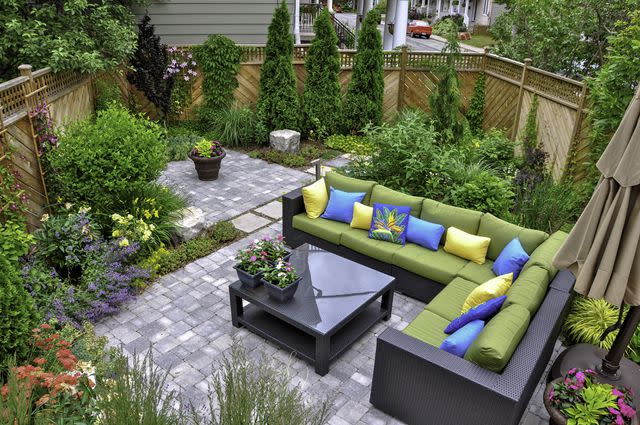
Joanne Dale/Getty Images
While plants may be first of mind when you picture landscaping, it's actually common practice to do hardscaping first, and follow with softscaping. Patios are often the largest element of hardscaping in landscape design, and they play an important role of designating functional spaces in the backyard.
Walkways
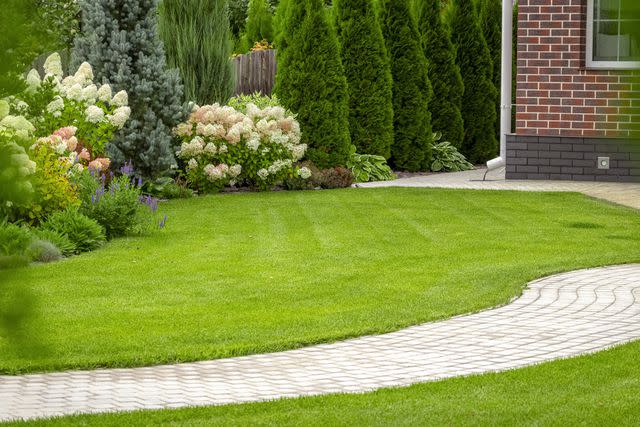
SVproduction/Getty Images
Walkways are another highly functional element of hardscaping. They create designated paths for walking throughout, keeping the stress off your grass or groundcovers.
Water Features
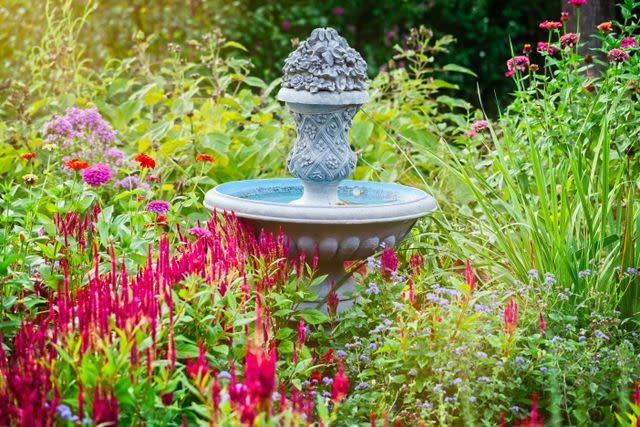
eurobanks/Getty Images
Water features—like waterfalls, water fountains, and even reflecting pools—are all examples of decorative hardscaping. Like many of the plants and bushes used in landscape design, water features can be used to help enhance the overall appearance and atmosphere of an outdoor space.
Fire Pits
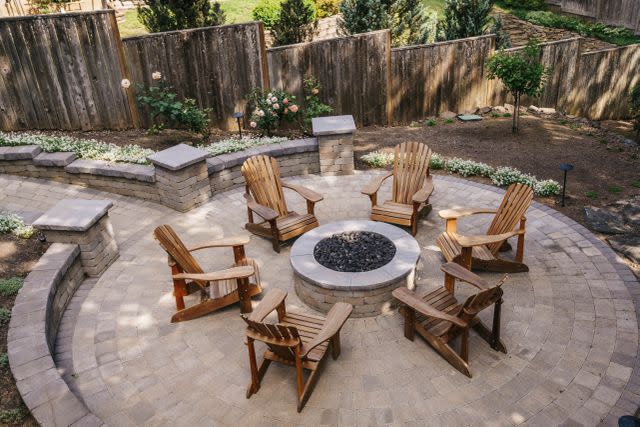
Inti St. Clair/Getty Images
Fire pits are often coupled with patios, another element of hardscaping, to create a designated area for relaxing and entertaining.
Related: 14 Outdoor Fire Pit Ideas to Upgrade Your Backyard Oasis
Pergolas
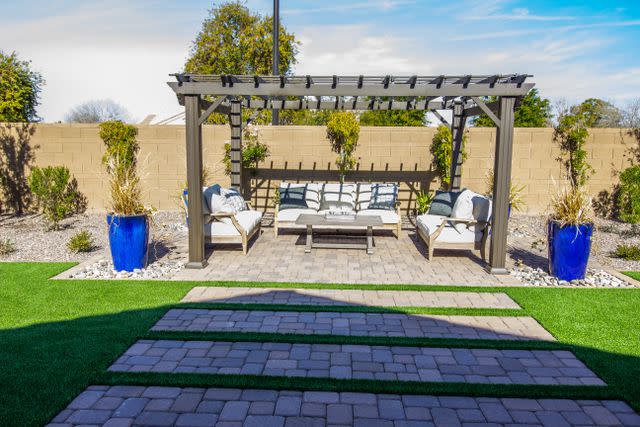
Thomas Bullock/Getty Images
Pergolas can help take a patio to the next level—literally—by adding more height to the space. They can also help mark and section off an area in your yard and provide varying levels of shade, depending on the style and options you choose.
For more Real Simple news, make sure to sign up for our newsletter!
Read the original article on Real Simple.

 Yahoo Sport
Yahoo Sport 





































